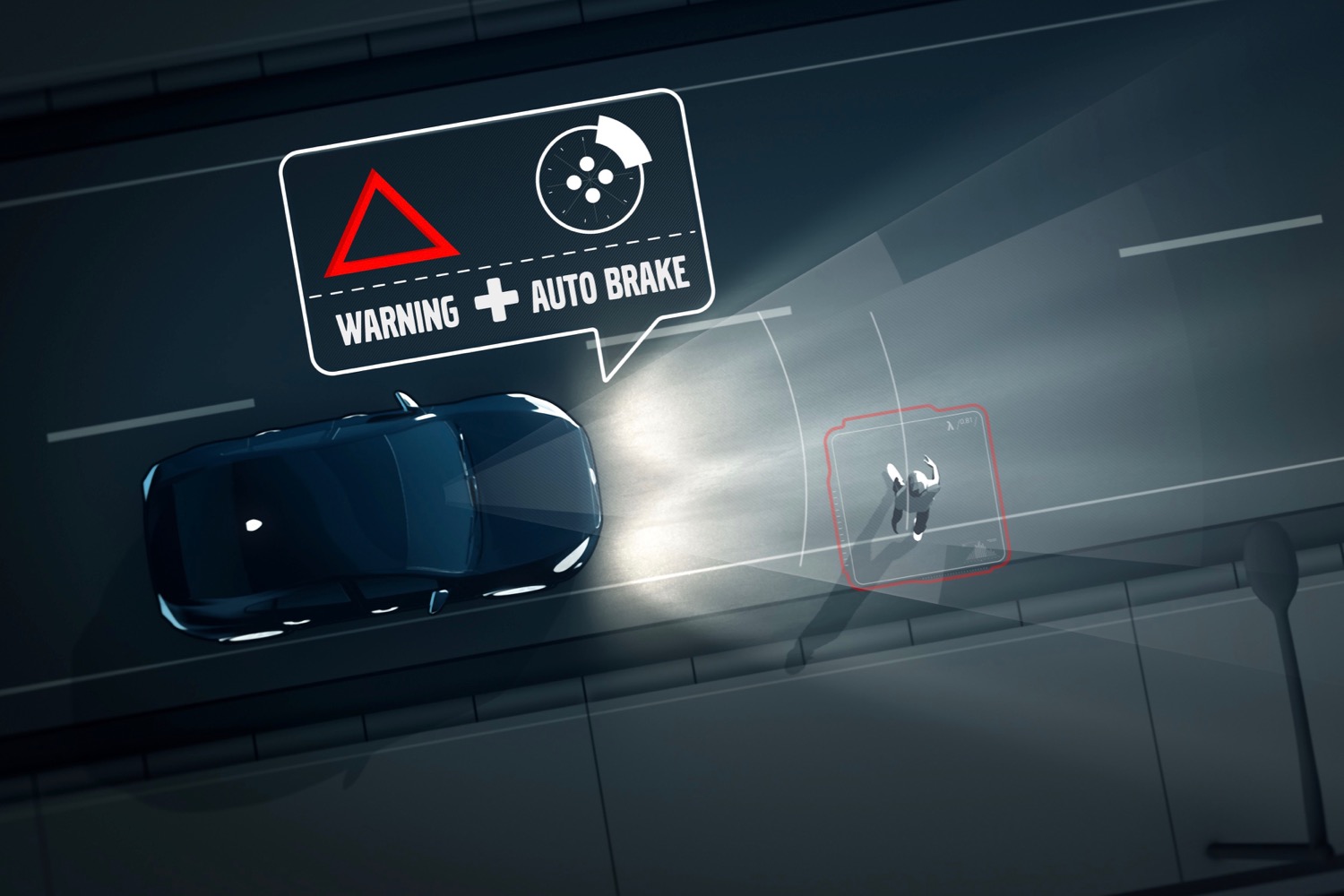
If you can’t see a pedestrian, don’t expect your car to either, says AAA. The organization recently conducted a study on pedestrian-detection systems, which are supposed to spot people walking into the path of a car and warn the driver or, in some cases, apply the brakes. But AAA found these systems don’t work reliably at night — exactly when most pedestrian fatalities occur, the organization noted.
AAA tested four sedans — a 2019 Chevrolet Malibu, 2019 Honda Accord, 2019 Toyota Camry, and a Tesla Model 3 — equipped with both pedestrian detection and autonomous emergency braking, which automatically applies the brakes if the car believes a collision is imminent. Tests were conducted on a closed course with “simulated pedestrian targets,” according to AAA. Researchers conducted tests in both day and nighttime conditions, at varying speeds, and with different behaviors from the fake pedestrians.
The results weren’t good. At night, none of the four systems reacted to — or even detected — the pedestrians, according to AAA. That’s especially troubling, as 75% of pedestrian fatalities occur after dark, AAA noted. Researchers also found that the systems were also ineffective at speeds over 30 mph. Even at 20 mph, a collision occurred 89% of the time when a car encountered a child darting out from between two parked cars. With two adults standing along the side of the road with their backs to traffic, and the car again traveling at 20 mph, a collision occurred in 80% of tests. A collision also happened in every test of a car encountering a pedestrian immediately after making a right turn.
Researchers found that the systems performed best when an adult crossed in front of cars traveling 20 mph. But even in that scenario, collisions still occurred 40% of the time, according to AAA. It’s a reminder that technology can’t replace an attentive human driver.
Drivers should not rely on pedestrian-detection systems to avoid collisions, according to AAA. The organization also advises drivers to familiarize themselves with the safety tech on their cars, both by asking questions at the dealership and reading the owner’s manual. Other AAA research has shown that drivers tend to put too much faith in driver-assist tech, and can easily overestimate tech’s capabilities. Drivers should also be extra cautious at night, AAA said.
Pedestrians can do their part to increase safety as well, according to AAA. It’s important to stay on sidewalks, and use crosswalks as often as possible, the organization noted. Just like drivers, pedestrians must remain alert at all times, and avoid distractions such as texting, AAA noted.
General Motors, manufacturer of the Chevy Malibu used in the AAA tests, released a statement in response to the study results. GM said that the technologies in question “have been proven to reduce crash speeds or help avoid crashes altogether.” The automaker cited a University of Michigan Transportation Research Institute study in which its autonomous emergency braking system “was effective in reducing rear end crashes by 44 percent,” but did not specifically mention collisions with pedestrians. Echoing AAA, GM did note that tech features “do not replace the primary responsibility of the driver.”
Updated on October 4, 2019: Added statement from General Motors.


